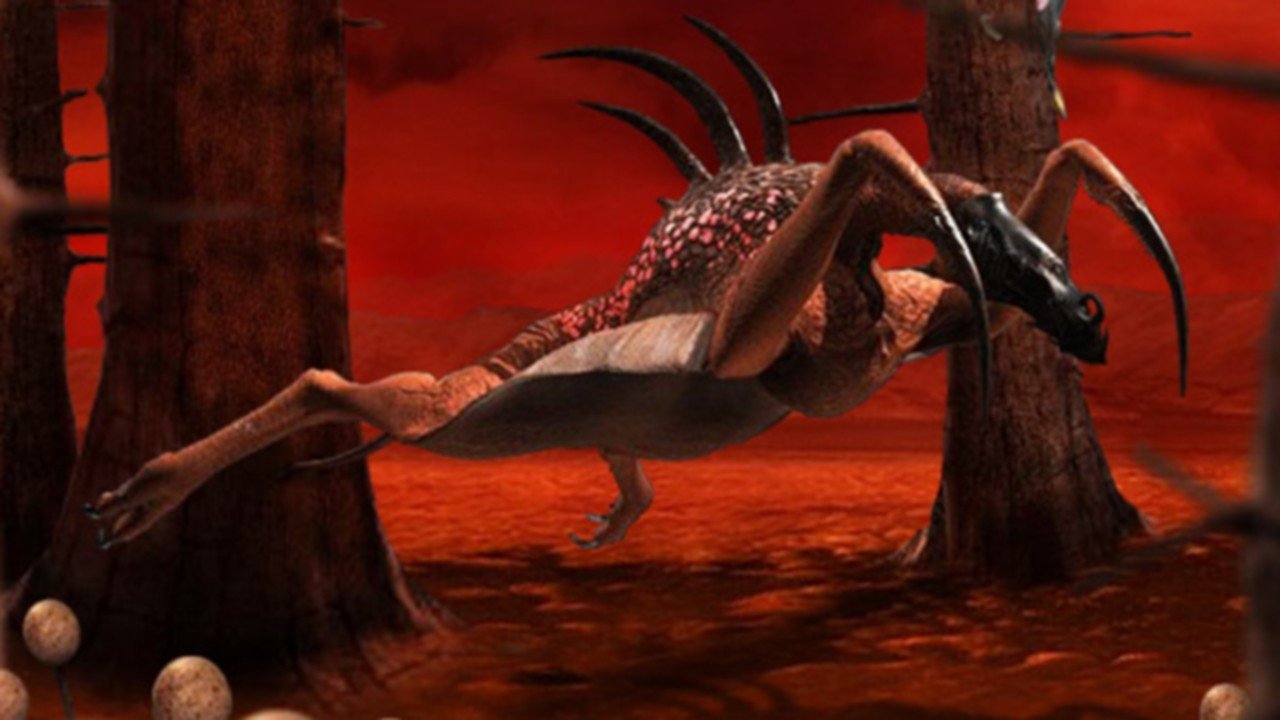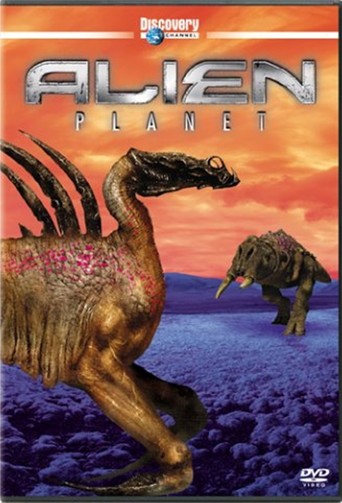Laikals
The greatest movie ever made..!
ReaderKenka
Let's be realistic.
AutCuddly
Great movie! If you want to be entertained and have a few good laughs, see this movie. The music is also very good,
Twilightfa
Watch something else. There are very few redeeming qualities to this film.
nrice-07604
I'll start with the positives:
The CGI that the creatures are made from (as well as the robots and the rest of the backgrounds) is amazing and looks super close-to-life. The array of scientists who intervene every now and then and discuss the previous events that just took place are all very well credited, and all very believable and intelligent people.However, the positives sadly end there. Aside from the creatures, the documentary really has nothing to do with the book. It has very wonky plot structure, and I was quite confused with what was going on at some points. The pacing is also off, as sometimes each scene seems like an eternity. The creatures are next. The creatures' habits, size, etc are all highly warped around. Some examples:
.the documentary gets the height wrong. The documentary insists that the Gyrosprinter is about the size of an antelope, whereas the book says it's much larger. While an accurate size estimate isn't included, the creature's tongue alone is around 2 meters long...that's as long as the documentary version's entire body! Meaning that the book gyrosprinter is nearly triple the documentary version's size.
.Body shape and habit changes. The Eosapiens' changes really bugged me. In the book they look primitive and savage, yet intelligent and wise. They regard the spaceship before them with an intense curiosity, never once showing any hostility to any of the expedition members. Alien Planet's Eosapiens are the exact opposite-the tiniest intrusion causes them to enter a fit of rage and destroy everything. Also, the Griveback is mentioned to be a filter feeder, sucking up tiny floating creatures, whereas the alien planet version absorbs water through its body to feed trees growing on its back. Ironically, the book version doesn't do anything to support the trees on its back, and they die within a week.
.the noises. Sure, they were all cool, but grossly inaccurate. Most of the Darwin IV inhabitants (with the exception of the Bladderhorn) communicate with sonar, inaudible to human or robot ears. Yet every single inhabitant in Alien Planet communicates with some loud, eerie shriek. It sounds cool no doubt, but it's inaccurate.My third problem is the overuse of CGI. Kinda like the star wars prequel trilogy, they didn't make any effort to ue practical effects or props in any way-everything was computer-generated. Don't get me wrong, it all looks very believable, but it just makes the production team seem lazy and not willing to do anything special-which i'm sure they're not. The final nail in the coffin of this documentary is that the narrators and guest scientists treat the events of the documentary like they could really happen, and try to make it believable. Wayne Barlowe's original book was meant to be science fiction, and science fiction only-he never tried to convince people something like that could actually exist. Steven Hawking and others' interventions are all very believable, and all supported by real scientific facts, but when you take those and compare them to the animal they're trying to get you to believe exists, you just laugh and pass it off as stupid. I had the same problem with the documentary of The Future Is Wild. But you know what? There's one thing that's important-they TRIED. They made a conscious effort to make an obscure piece of literature into something bigger. They tried to take something already existing and remake it for a more modern audience. But that just poorly reflects when you look at all the problems with it. There really wasn't a demand for a cinematic version of Expedition, then, and there really isn't one now. It was a fantastic book, but not one you'd expect to be remade into a movie like a bajillion times.So that's my honest review of Alien Planet, a solid five stars. I wish I could rate it higher-I really do. But inconsistencies in the plot, creatures, etc etc etc really weigh it down. Its creators tried-they really did-and it's a shame all their effort formed this.
starrborrn
this is the first time i have seen a show that actually depicts what could be out there in a scientific fashion.The way we can calculate the possibility of life is by the Drake Equation, created by Frank Drake in the early 1960s. It states: N= (r* x fp x ne x fl x fi x fc) L where:N= number of possible civilizations to communicate withR* = is the rate at which stars capable of sustaining like are formedfp = the fraction of these stars which have planetsne = the number of planets similar to Earth in the planetary systemfl = the fraction of the Earth-like planets that hold life fi = the fraction of life that becomes an intelligent civilizationfc = the fraction intelligent civilizations that attempt to communicateL= the number of years the civilization remains able to communicate.When these numbers are taken into consideration, we realize that there is a great possibility of life out there. There are about 400 billion stars in our galaxy, so there could be life right next door (relatively speaking, since that may be hundreds of thousands of light years away). Even if there is no life in the Milky Way, there are billions of other galaxies to turn to. We likely will not contact such civilizations in our lifetime, but it gives us a new kind of hope and dream for the future of our planet and the future of mankind.so Darwin 4 could actually exist out there somewhere.
pi squared
In this film/documentary we get to follow a hypothetical future space probe on its journey to a distant planet to explore and examine if the planet is inhabited (from bacteria to beasts).If you actually manage to watch this without throwing your television through countless windows you'll get to see a carefully scripted series of events, loads of horrible bulldozer-sized animals Do not forget to look for the jet-propelled "bats" the size of aeroplanes who use their "hollow trunks that are harder than titanium" to penetrate and suck the juice out of their victims.The film (for a lack of better words to describe it) starts out with a lot of potential, potential that is later violated and stomped upon numerous times. The thing that you'll probably think about whilst watching this abomination will be "Who, IN THE NAME OF GOD, gave the concept artists that much freedom?!" Everything on the planet in question either has areas shining as if they were some kind of decorative lightning, or have no organ capable of absorbing enough energy to live through the day.I would recommend this if you want to get angry at most things alive today, otherwise: STAY AWAY FROM THIS PIECE OF BATSHIT!
s c
It seemed very interesting to me upon first glance, previous "documentaries" shown on Discovery had some scientific background...but this one seem to be mostly fictional...The whole time I was watching, I was hoping "so is there actually something factual we discovered that led them to make these surreal creatures? like they found some sort of tracks, or remains, etc(kind of like the shows they did on raptors- they had more proof... or are these just figments of imagination?" I was hoping for a better conclusion than "ooo, there's more possibilities to life in other planets than we first thought"...Watching it was interesting, but the fact that it was based on wild guesses and creations of mind without any actual findings is simply a turn off ... I believe there's extraterrestrial life too, but I didn't need to waste 2 hours to see a "documentary" to convince me, I could've just gone renting a Sci-fi movie if I wanted to be intrigued... The delivery of the story was good, the graphics were fantastic, but the realism, un-realism rather, is a major negative blow to the show...

